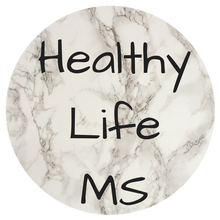Sometimes you can just 'feel' that you have put on a little weight, or some of your favourite clothes don't quite fit like they used to. Other times your doctor may suggest that some of your symptoms may improve if you lost a little weight; but it can be difficult to know what a healthy weight could represent.
There are two easy tools we can use to help with this: one useful method is to calculate your Body mass Index (BMI) which gives a number based on how your bodyweight relates to your height and another calculation based on your waist circumference (WC).
1. Body Mass Index (BMI)
BMI can be assessed using this chart and is calculated by:
1) Measuring your height in metres and weight in kilograms (both without shoes)
2) Multiply the figure for height by itself
3) Divide your weight in kilograms by the answer noted in the previous step.
1) Measuring your height in metres and weight in kilograms (both without shoes)
2) Multiply the figure for height by itself
3) Divide your weight in kilograms by the answer noted in the previous step.
Limitations of the BMI model
Classifying weight into a category according to BMI is a useful guide, however does have limitations:
- It is suitable for Adults over the age of 18; it is not suitable for use with children
- It does not apply to pregnant women
- It is not suitable for use with athletes or very athletic
2. Waist Circumference (WC)
Your shape - indicative of where you carry excess weight - can also indicate your health risk. Carrying excess weight around the middle can increase the risk of developing coronary heart disease, high blood pressure and diabetes.
You can easily assess whether your shape is putting you at increased risk by measuring the circumference of your waist by following the handy tips from the British Heart Foundation below.
At present guidelines exist for people of European and Asian ethnicities while data for other ethnic groups is not available; if you are not of Asian background current recommendations indicate that you should follow guidelines for European men and women.
Separate guidelines exist as data shows that individuals of Asian ethnicity are more likely to have a higher proportion of body fat to muscle compared to the rest of the UK population. People of Asian background tend to carry this fat around their middle meaning that they are at greater risk of developing problems including diabetes and coronary heart disease at a lower waist size than other ethnicities in the UK.
However, no matter what your ethnic background it is important to remember that the measurements below are a guide. If you are unsure please consult your doctor who will be able to make an individual assessment of your overall health risk based on your individual risk factors.
British Heart Foundation (BHF) guidelines for measuring your waist:
1. Find the point halfway between the bottom of your ribs and top of your hips; this will probably be in line with your tummy button or slightly higher. Measure yourself around the middle point. Remember to start at the lowest end of the tape measure and try to relax and not breathe in!
2. Check your measurement on the chart below; it is recommended that men use the metric measures (cm) while women use imperial measures (inches).
Sources:
British Heart Foundation, 2011 .Session 13 sheet: Waist measurement instructions' (available online as PDF at www.bhf.org.uk)
NHS choices website
World Health Organisation (WHO; 2017) BMI categories
British Heart Foundation, 2011 .Session 13 sheet: Waist measurement instructions' (available online as PDF at www.bhf.org.uk)
NHS choices website
World Health Organisation (WHO; 2017) BMI categories



